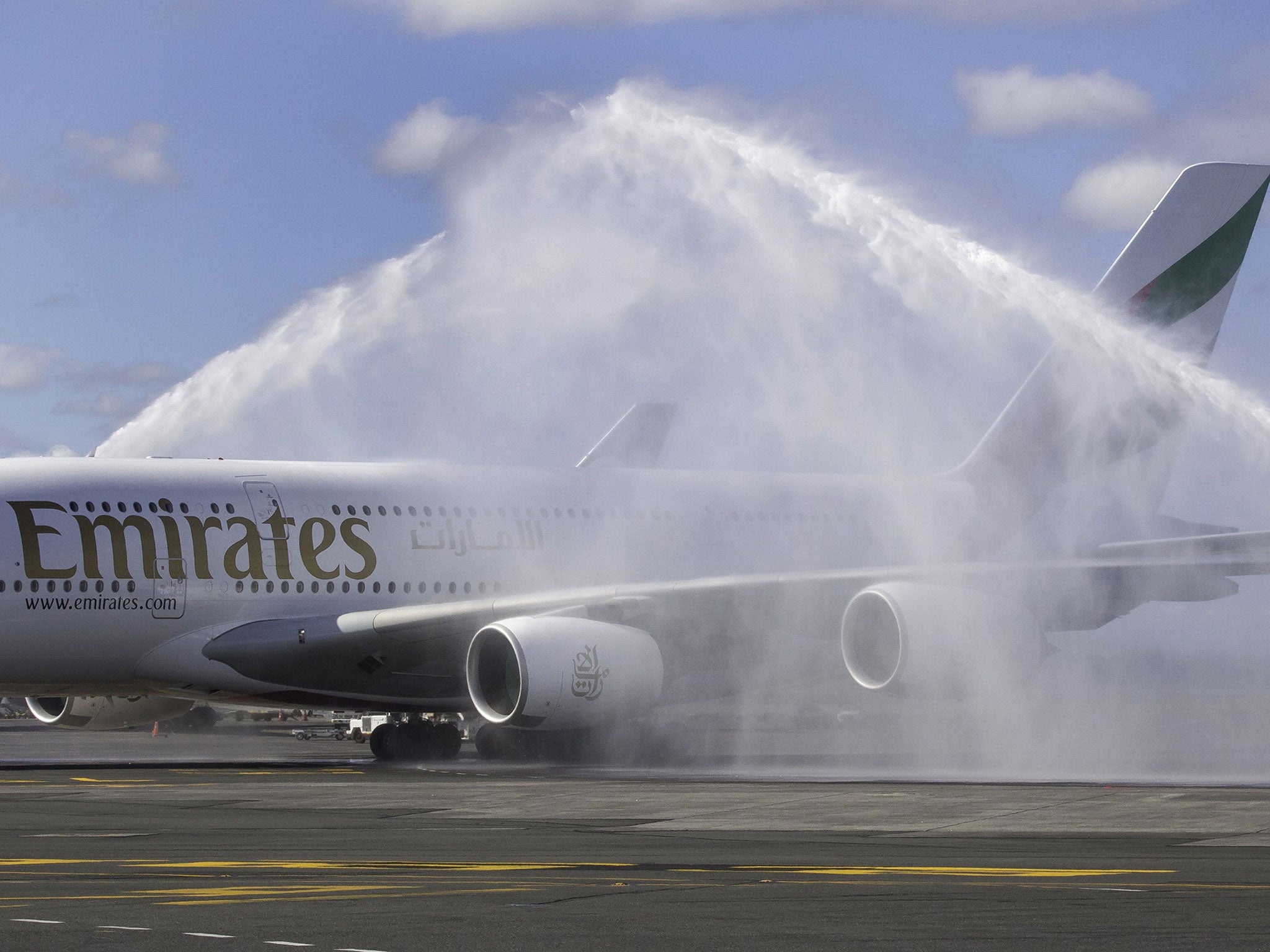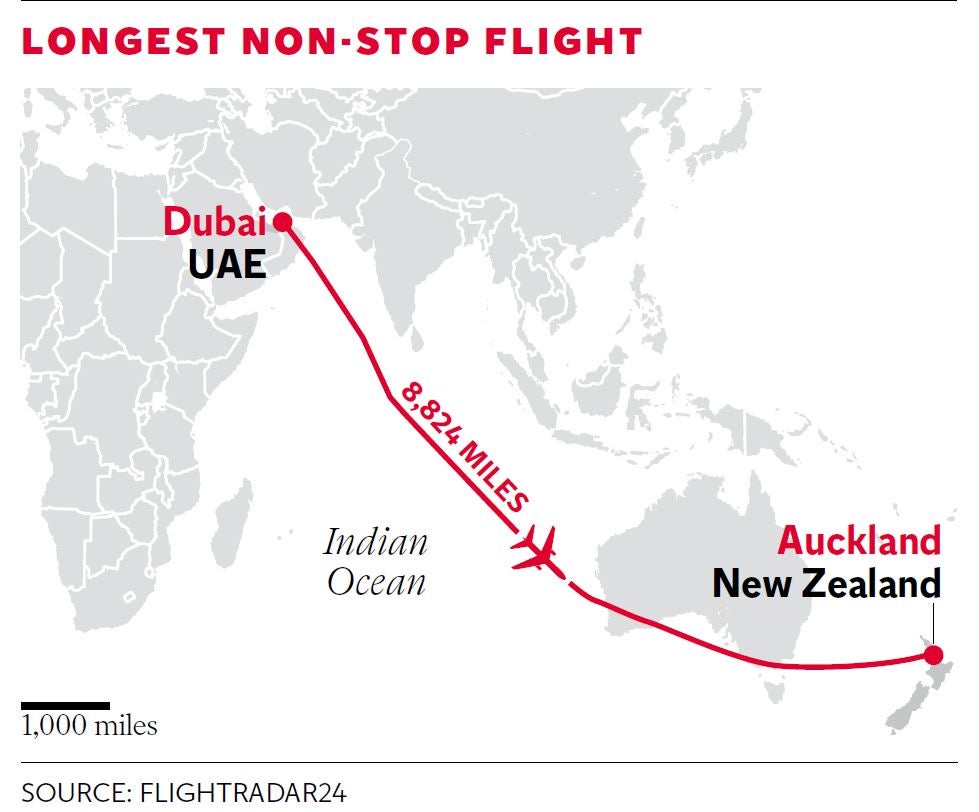Emirates flight 449: World's longest flight between Auckland and Dubai could trigger fares war
The new route accelerates the journey to the far side of the world from cities such as Birmingham and Glasgow

Your support helps us to tell the story
This election is still a dead heat, according to most polls. In a fight with such wafer-thin margins, we need reporters on the ground talking to the people Trump and Harris are courting. Your support allows us to keep sending journalists to the story.
The Independent is trusted by 27 million Americans from across the entire political spectrum every month. Unlike many other quality news outlets, we choose not to lock you out of our reporting and analysis with paywalls. But quality journalism must still be paid for.
Help us keep bring these critical stories to light. Your support makes all the difference.
Ultra-long-haul aviation is back - and this time it could trigger a fares war.
Early on 3 March, Emirates flight 449 made history when it touched down in Dubai from Auckland. The Airbus A380 covered an estimated 9,000 miles between New Zealand’s largest city and the airline's hub, making it the current longest non-stop scheduled commercial flight by a distance.
The flight was also expected to be the longest by duration, with a gate-to-gate time of 17 hours, 15 minutes. But after a delayed departure from Auckland the pilots made up time and landed after 16 hours, 24 minutes in the air.
The new route accelerates the journey to the far side of the world from cities such as Birmingham and Glasgow. With a single touchdown in Dubai, the fastest journey time from either city to Auckland falls to under 26 hours.
The increase in capacity has also put downward pressure on fares. Emirates is quoting just £810 return for a flight from Manchester to Auckland in May using the new non-stop link from Dubai. The fare works out at barely 3p per mile, compared with around 50p per mile for the train from Manchester city centre to the airport.

Christopher Adams, business reporter for the New Zealand Herald, was aboard the first flight from Auckland to Dubai. He used the onboard wi-fi to deliver a live blog as the plane flew over northern Australia and the Indian Ocean.
Mr Adams, who flew business class, was heckled online for some of his criticisms. He complained about the patchiness of the wi-fi and said: “I’m struggling to find anything I've been wanting to watch in the new movies section.”
The business-class cabin was half-empty, said Mr Adams: “A crew member tells me this is due to a load restriction on the A380 required for it to complete the marathon flight to Dubai.”
The track did not follow the “great circle” route - the shortest distance between two points on the surface of the earth, which between Auckland and Dubai is 8,817 miles. The route deviations are estimated to have added around 200 miles to the journey.
The previous holder of the distance title was Emirates’ partner, Qantas, on its Dallas-Sydney service. The Texas-Australia flight covers a slightly shorter distance - 8,580 miles - and is scheduled to take just under 17 hours from gate to gate.
Yet the new Auckland-Dubai link is a long way short of past and future flights. Until 2013, Singapore Airlines flew 9,534 miles from its base to New York, taking about 18 hours, 30 minutes.
High fuel prices put paid to the service. Ultra-long flights burn far more per mile than the average trip, because of the weight of the fuel in the tanks. With airlines now able to buy fuel more cheaply, route planners are once again looking for extreme links.
In August 2015, Emirates promised that a record-breaking flight from Dubai to Panama City would start in February this year, covering 8,600 miles in around 18 hours. The launch was postponed to later this month. That plan was axed on 3 March, with the first flight now likely to be in late 2016 or early 2017.
A spokesperson for Emirates said: “We firmly believe in the potential of Central America, and remain keen to link the Emirates network to the region.” The airline declined to comment on speculation that the Zika crisis was a factor in the postponement. The virus has hit tourism to Panama and most other Latin American nations.
Back in business class, Mr Adams concluded his blog: “I imagine it wasn't such an easy ride for those down in economy, but we all got here in the end.”
Join our commenting forum
Join thought-provoking conversations, follow other Independent readers and see their replies
Comments